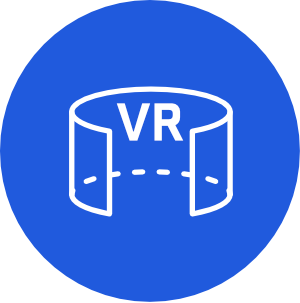A little about me
For 23 years, I have had one foot in the field of training, consulting, and coaching, whether for large multinational corporations, the public sector, or medium, smaller, or start-up companies. My other foot has been in business even longer and I have also held several management positions in different companies, at different stages of their development, and have been able to try and practice all that I train.
In this article, I would like to try to seek answers to questions about changes in training, new trends, and opportunities that should affect the level, quality, and effectiveness of corporate training in the future. At the same time, I will also take the liberty to pass on some of my experiences and insights that I have gained in this field.

Mgr. Pavel Pavlas
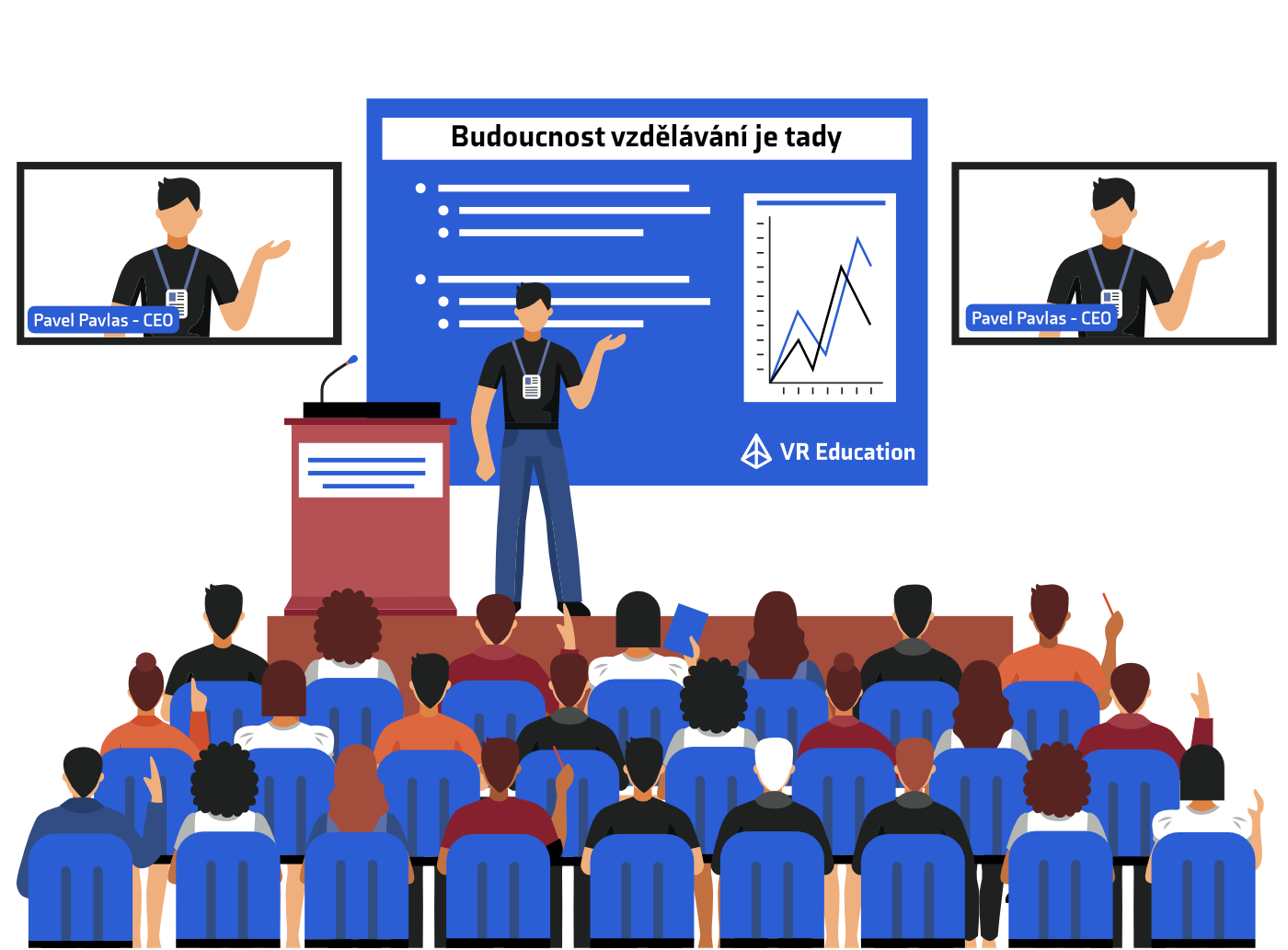
Introduction
During these 23 years, I have gone through, graduated, studied, and verified a lot of development programs of different companies, different names, and each one could help, push, and inspire the graduates in something, exactly depending on what stage the graduate of the course was in and eventually the company to which the enthusiastic participant will return after the course.
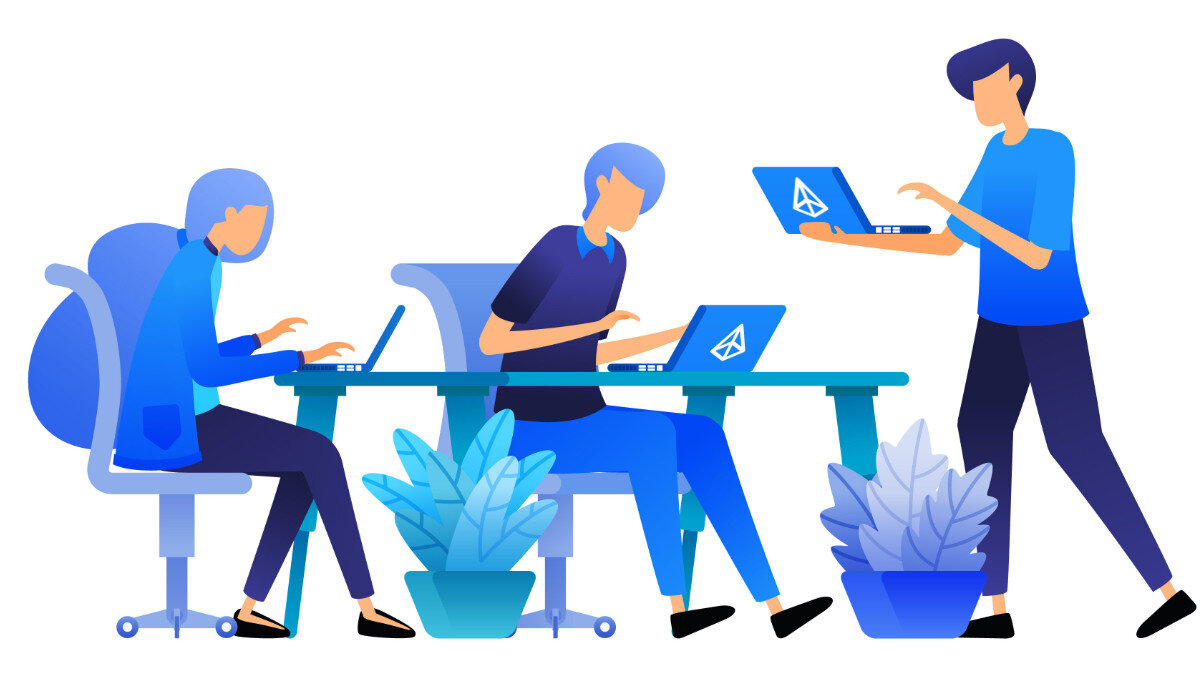
But the most important thing in corporate training is transferability to practice with a lasting impact.
Not that in a week or a month no one uses anything from the course and goes back to their usual rituals. At that point, all the skills, knowledge and attitude changes that have been acquired so dearly will be wasted.
Today’s managers in all positions are mostly faced with the enormous pressure associated with the great speed of our Turbulent Times.
So the aim is and will be to develop these factors:
- Its knowledge – to offer professional courses and its development
- His skills – to give him the opportunity to apply the knowledge he has acquired,
- His character – everything that makes a person human – to enable him to know his potential and then to use it in accordance with his personality traits
Chapter 1
Utilising maximum potential
How can we do this to make better use of the potential of our people and the time spent on different types of development courses? I would divide my answer to this question into two different and ultimately converging streams.
The first stream is the powerful river of never-ending personal development and the second stream of the title – digital transformation and the use of new 21st century tools. A strong trend that is constantly influencing all of us and not everywhere is taking it as their helper.
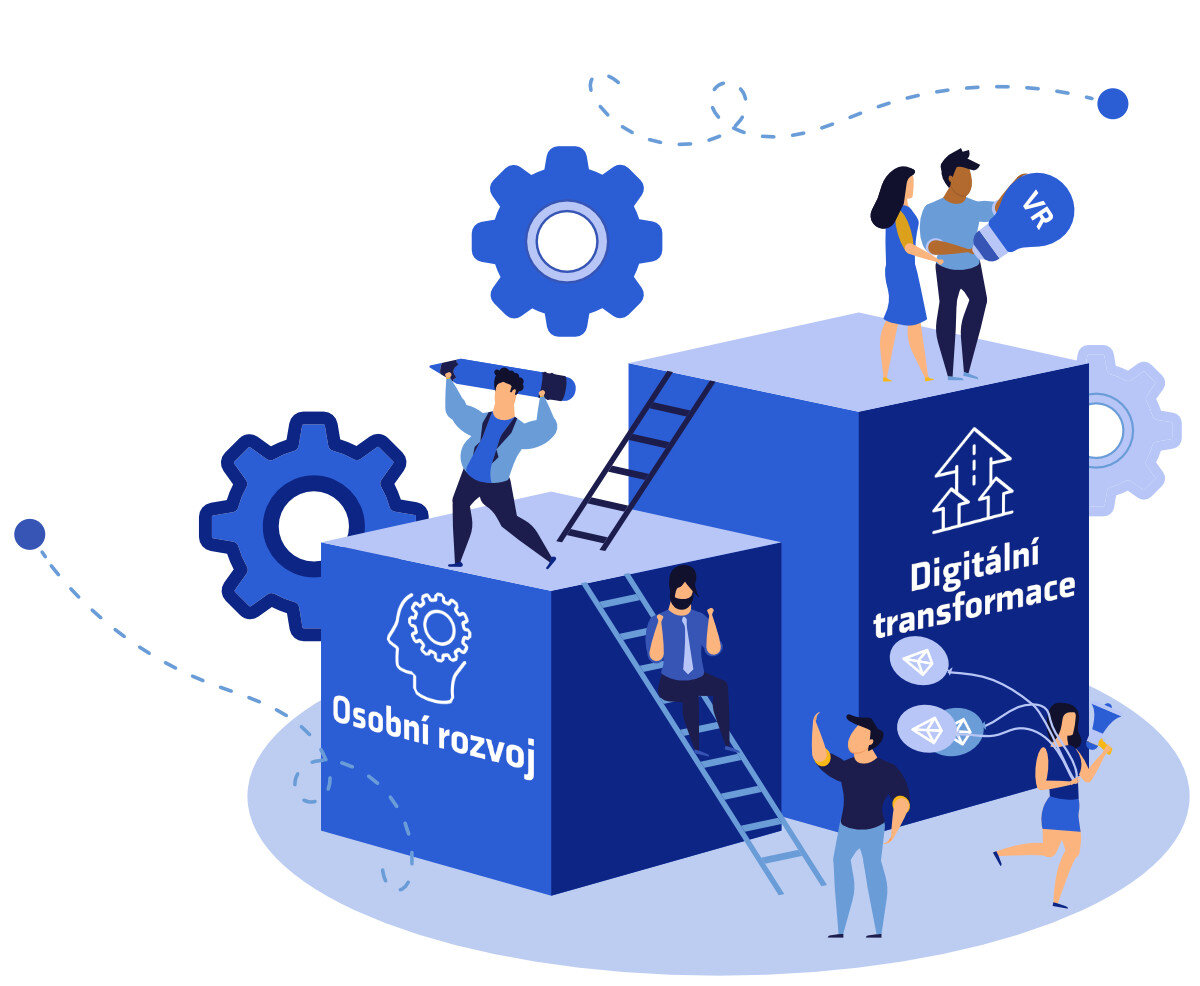
Personal development area
Over the years I have spent in various projects in different companies I have been given countless opportunities to be part of changes in the company, team, or individuals.
Successful companies share common traits, including fostering personal growth in individuals, motivating their employees, cultivating a long-term commitment to self-improvement, and providing a supportive environment conducive to professional development.
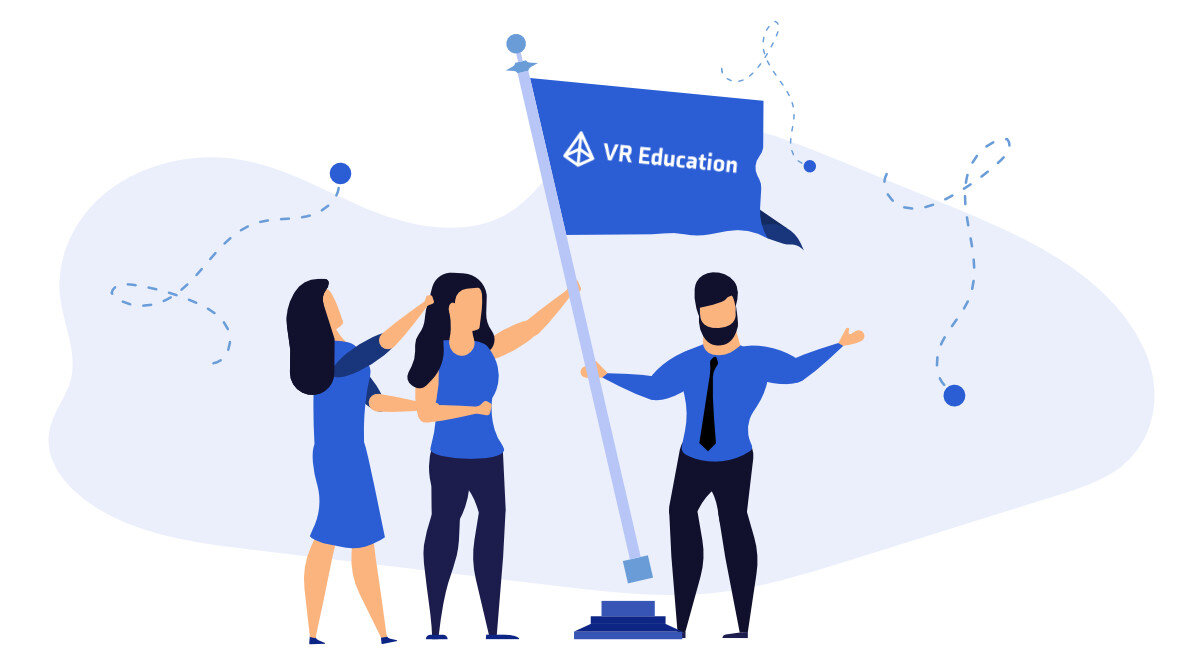
And it’s an honor and a commitment for me to be a part of that and to build such long-standing relationships that I’m grateful for with many of my clients. And it doesn’t matter if it’s the owner, the top manager, or the production foreman who takes this journey.
Often these initially working relationships cross over into the level of personal friendship and that is one of the many benefits of this wonderful job.
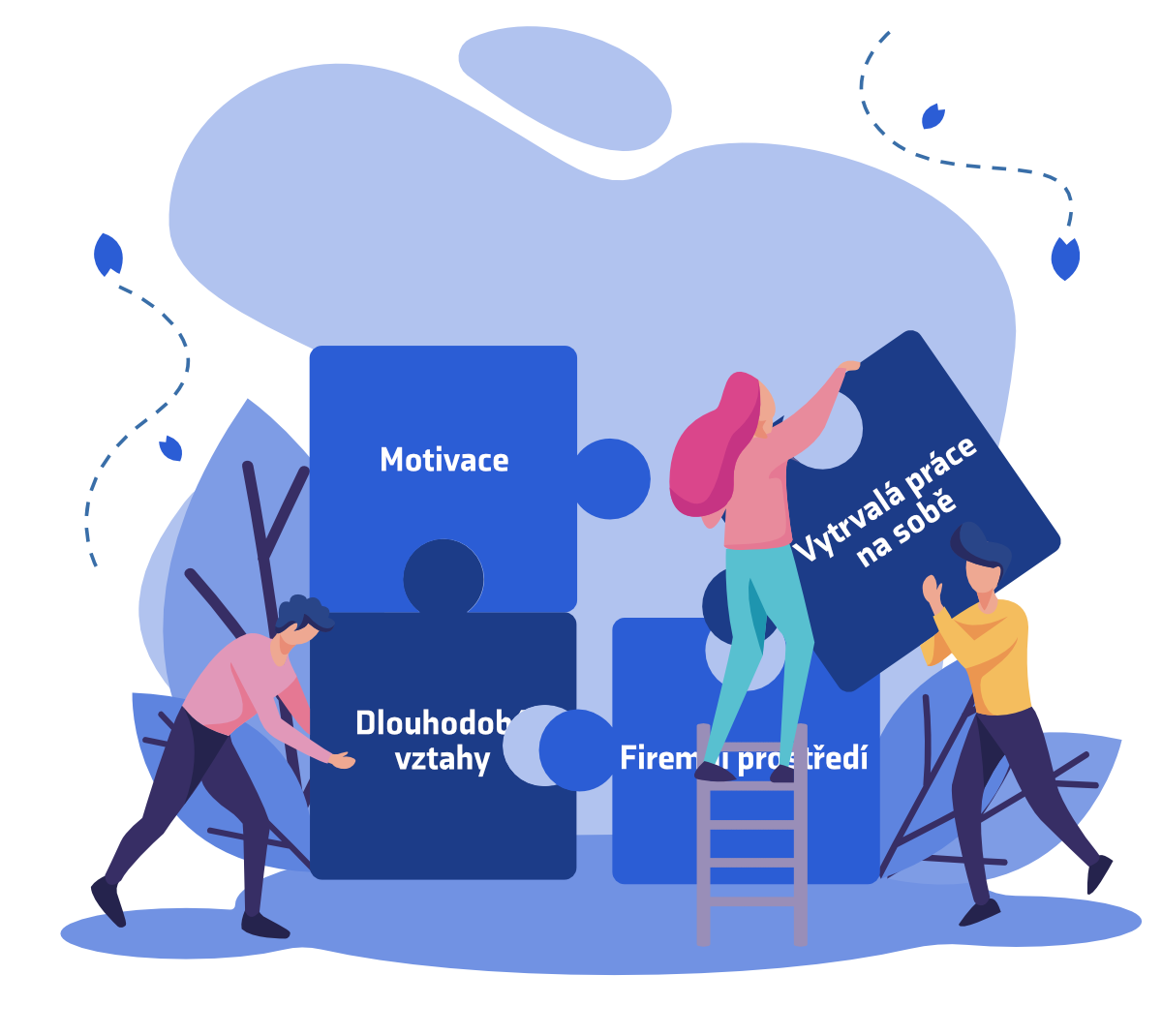
One of the many reasons that continue to convince me that the success of the reception of a given information or message, training or training that is supposed to influence the attitudes and emotions of the participant and to ensure the long-term transfer of acquired knowledge into practical life, will always be very strongly tied to the personality of the lecturer, coach, trainer and this human element will always be a very important element in the field of education.
So we do not have to be afraid that some tools and aids will make us uncomfortable and we will start to approach robots.
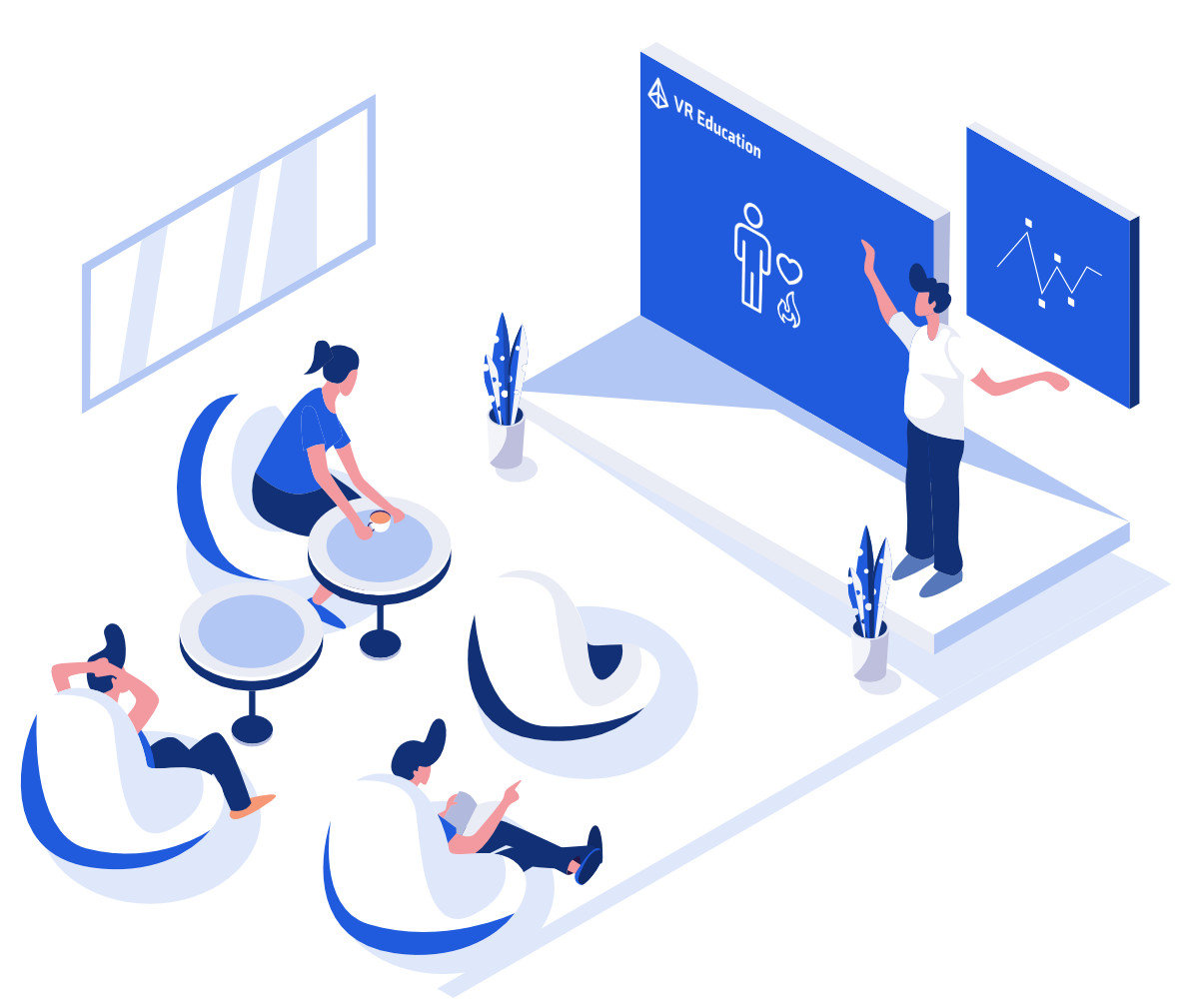
Someone could experience a combination of e-learning training and a second consultation with a lecturer or just pure training in the form of e-learning applications. Someone could also experience the great time-saving of training in the form of an active webinar (live broadcast).

The world is evolving very fast already in kindergartens, schools, children encounter tablets, computers, interactive whiteboards and, last but not least, virtual reality.
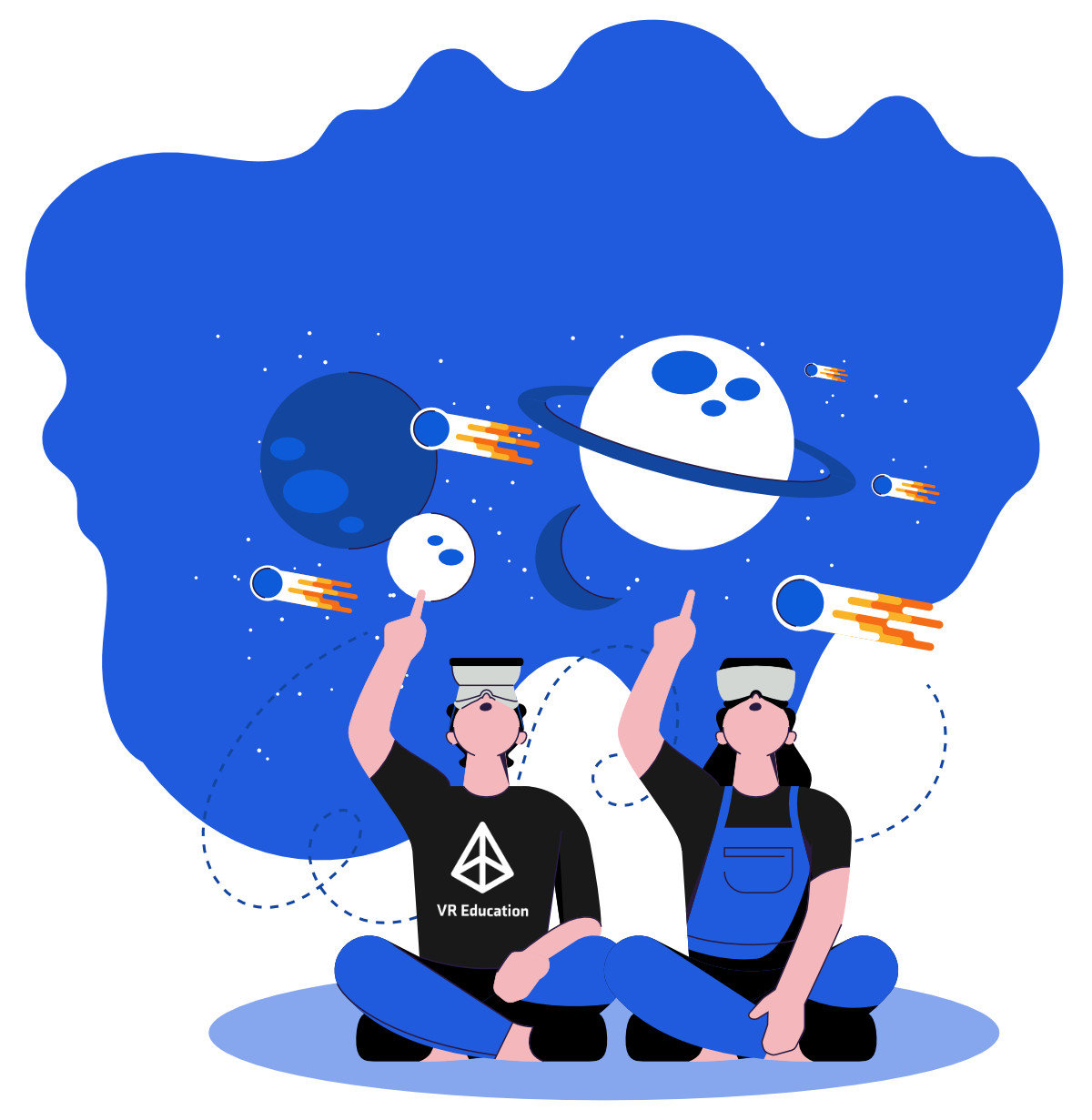
Virtual reality provides a very powerful experience, interactive learning, long memorability, and a sense of ownership. The downside is that once they leave the school gates they often come into the corporate sector and are often set back twenty years, when the only aid to presenting is a whiteboard, or at best presentations are done in PowerPoint.
It is sometimes sad to see the reality of a company that presents itself as modern, trendy, with a big vision, yet is afraid to learn new things.
I once heard a Native American wisdom about how we have two wolves that run through our lives, one dark and one light. One represents our fears, anxieties, and insecurities and the other represents our chances, faith, and opportunities. And the one we feed, the one we give our attention and our thoughts to, will survive. And it doesn’t matter if it’s in our personal or professional lives.
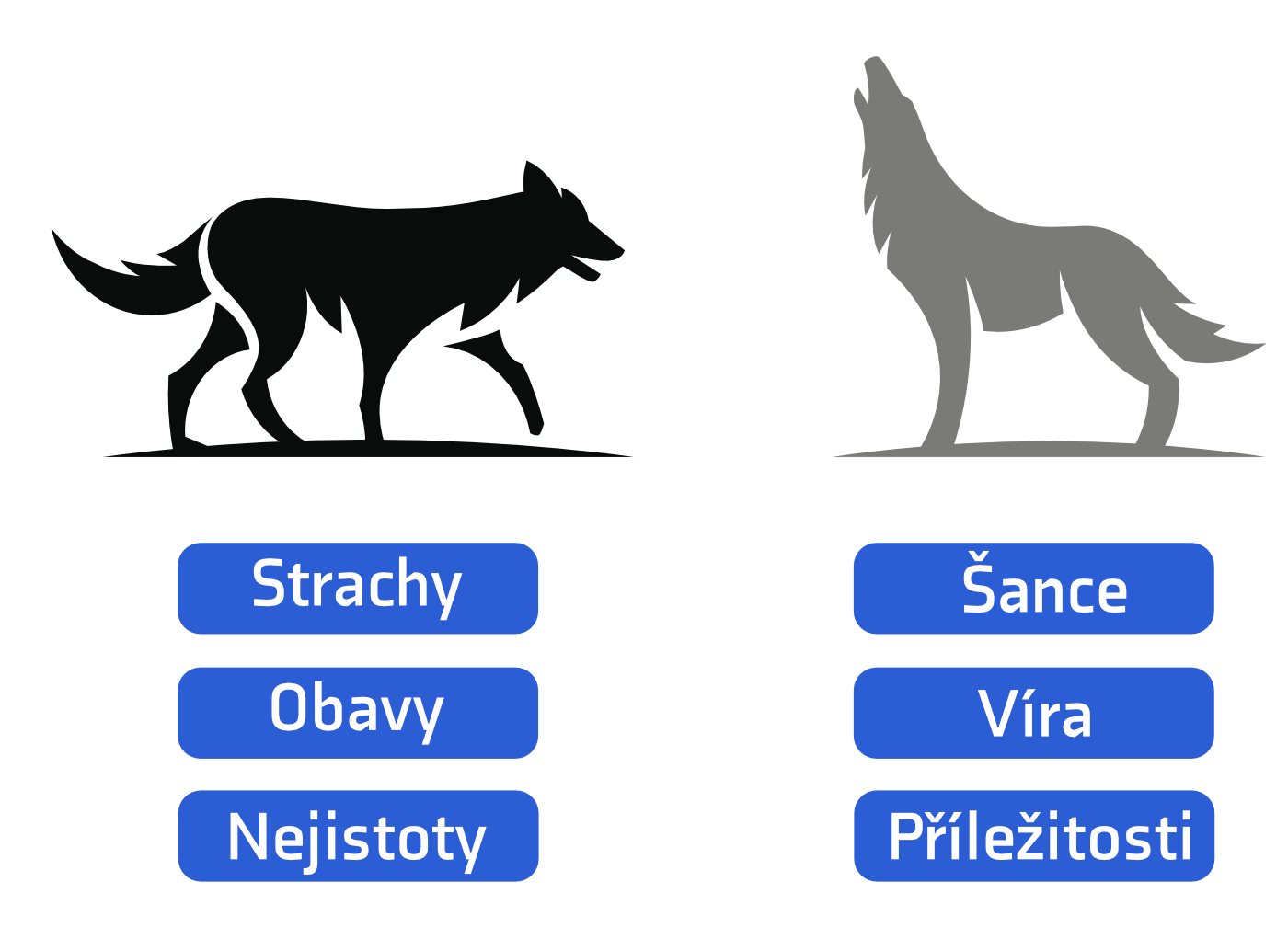
All of these tools are there and have huge potential to change the way adults learn. These techniques are already being tested in the vast majority of multinational companies today, and I dare say they will be quite defining for the future of corporate learning.
Chapter 2
VR technology and education in companies
Over the last 30 years, technology has helped boost corporate productivity dramatically – „Prosperity is born of leanness, not excess“. And that’s one of the reasons we’ll touch on the other strand, which is virtual reality development and education.
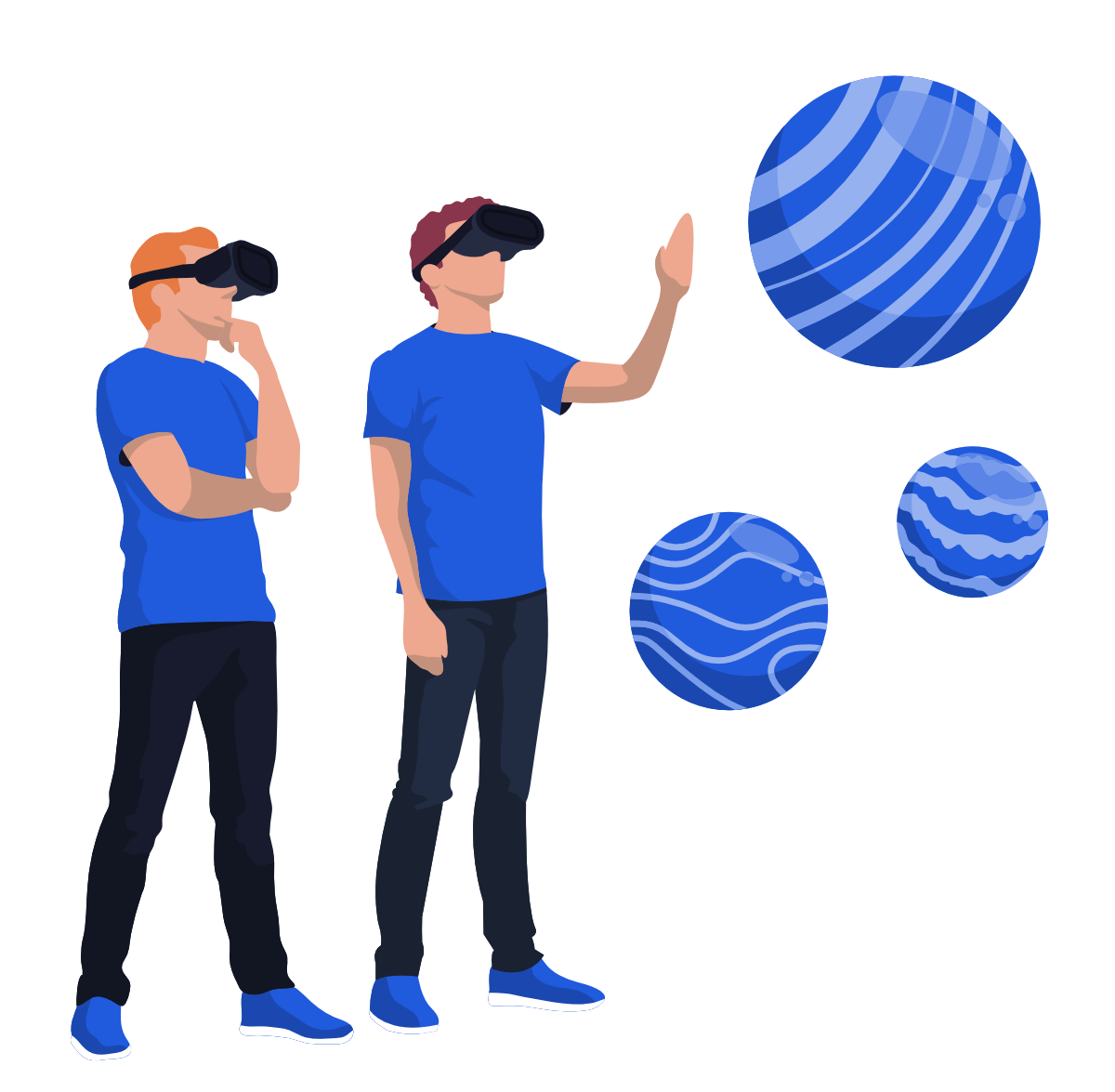
I think virtual reality has great potential in education. There is countless research and testing going on around the world that is creating content for a new form of technology in education that is being presented at many conferences and workshops around the world.
And it is from these findings that I will now draw. The human brain is almost as programmable as a computer. We can program it in two ways, either by memorization – constant repetition – or by our own experience.
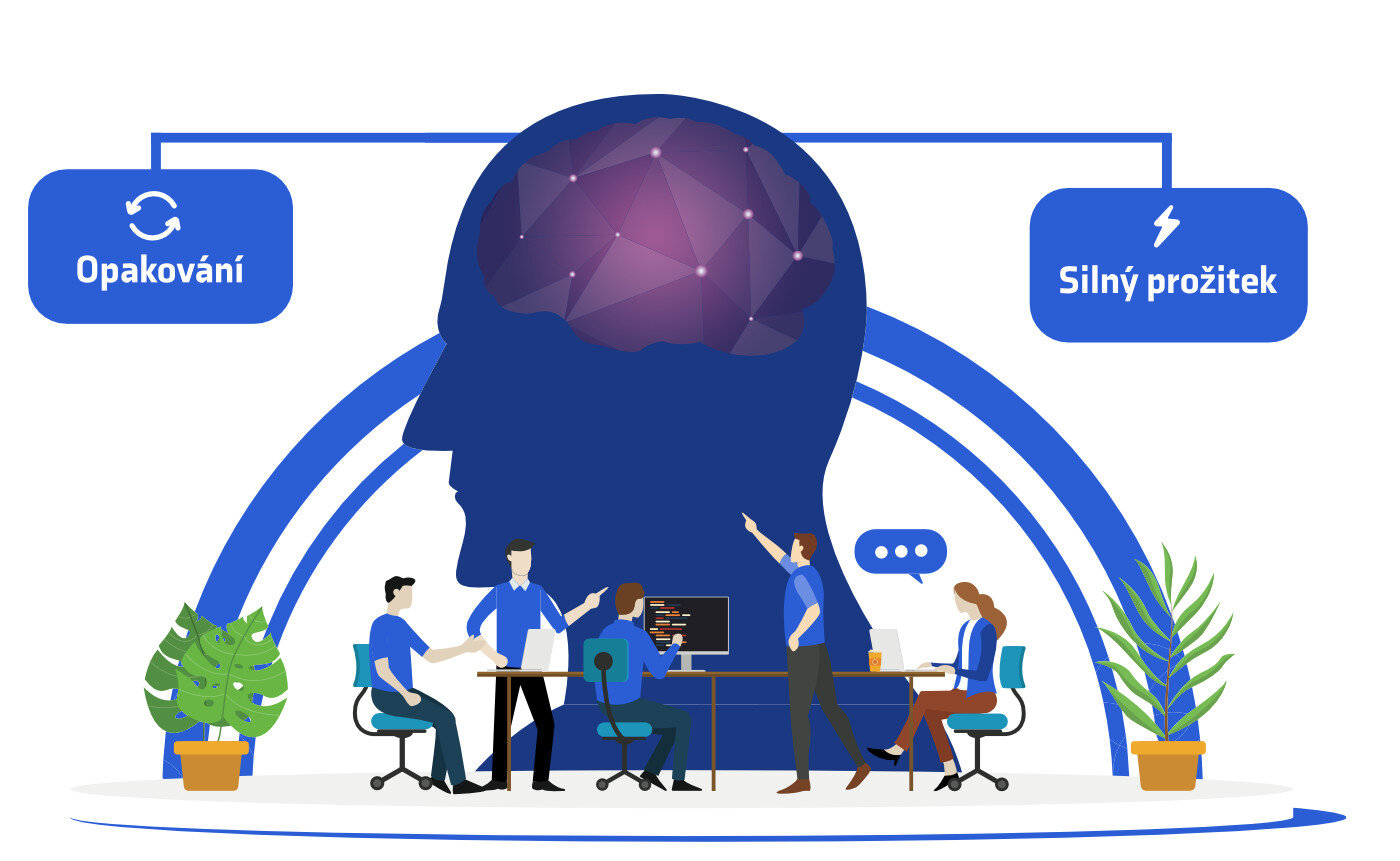
And this is where the powerful weapon of virtual reality comes into play, namely a powerful experience, sometimes equal to the real experience. This knowledge, if used properly, can make the journey of education much easier.
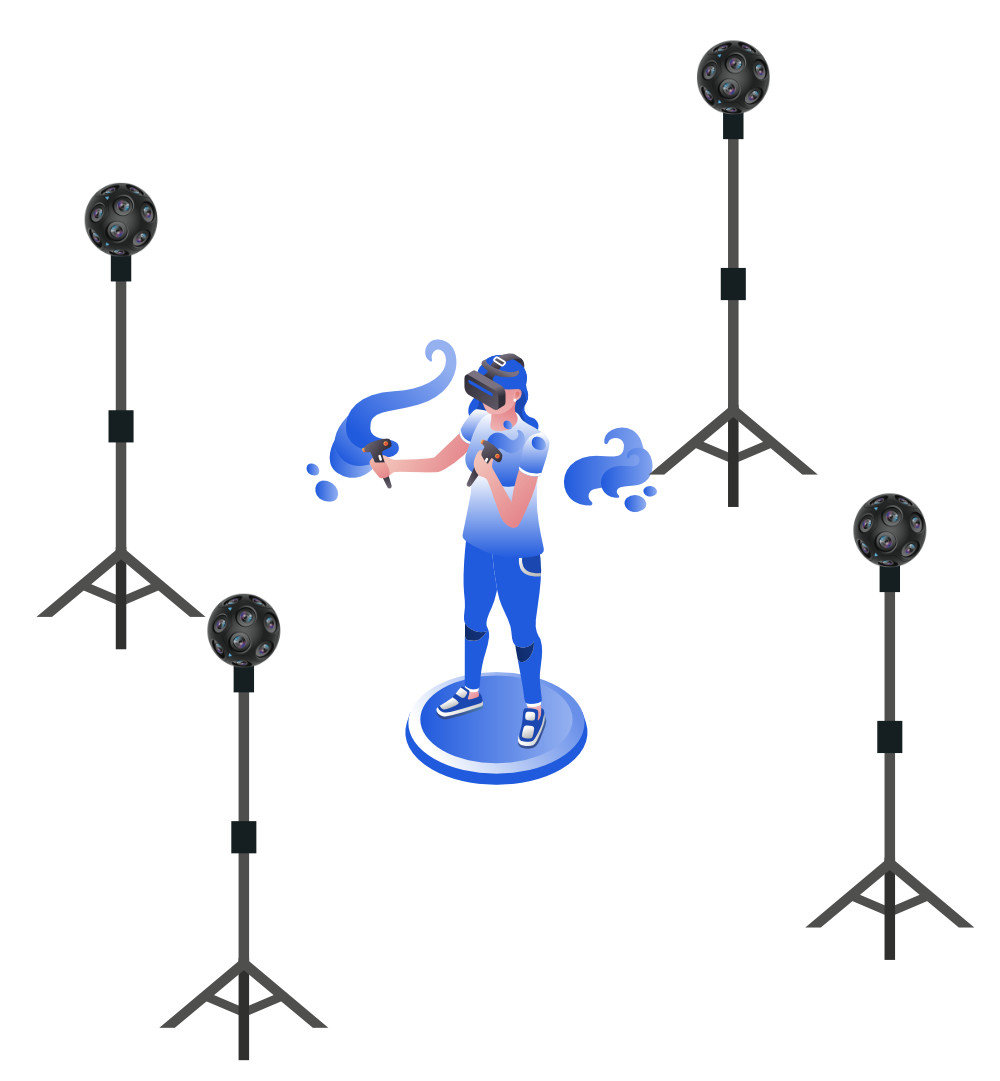
This phenomenon is already used today in the training of athletes. For example, VR is also used by NASA, the health sector and can be found in the army, in schools, retirement homes, travel agencies, but gradually it is also entering the corporate sector, where it offers many other uses.
NASA is not only popularising its work and its focus through its development, but it is also attracting young people to the development of this technology in a big way.
VR technology is making its way into the world of medicine with great investment. To train and learn on 4D models of the human body and achieve a high level of the necessary skills, it offers faithful simulations that will one day allow doctors to operate on people around the world via robotic equipment.
Virtual reality is gradually making its way into education through animation programs, which often focus on topics such as occupational safety.
A common argument of many clients until recently was price.
But today VR is no longer an expensive investment. On the contrary, increasingly cheaper tools make it possible to achieve a completely different form of education for a minimal investment, by purchasing VR glasses.
Virtual reality takes training effectiveness to a whole new level. Every participant literally experiences their training with all their senses.
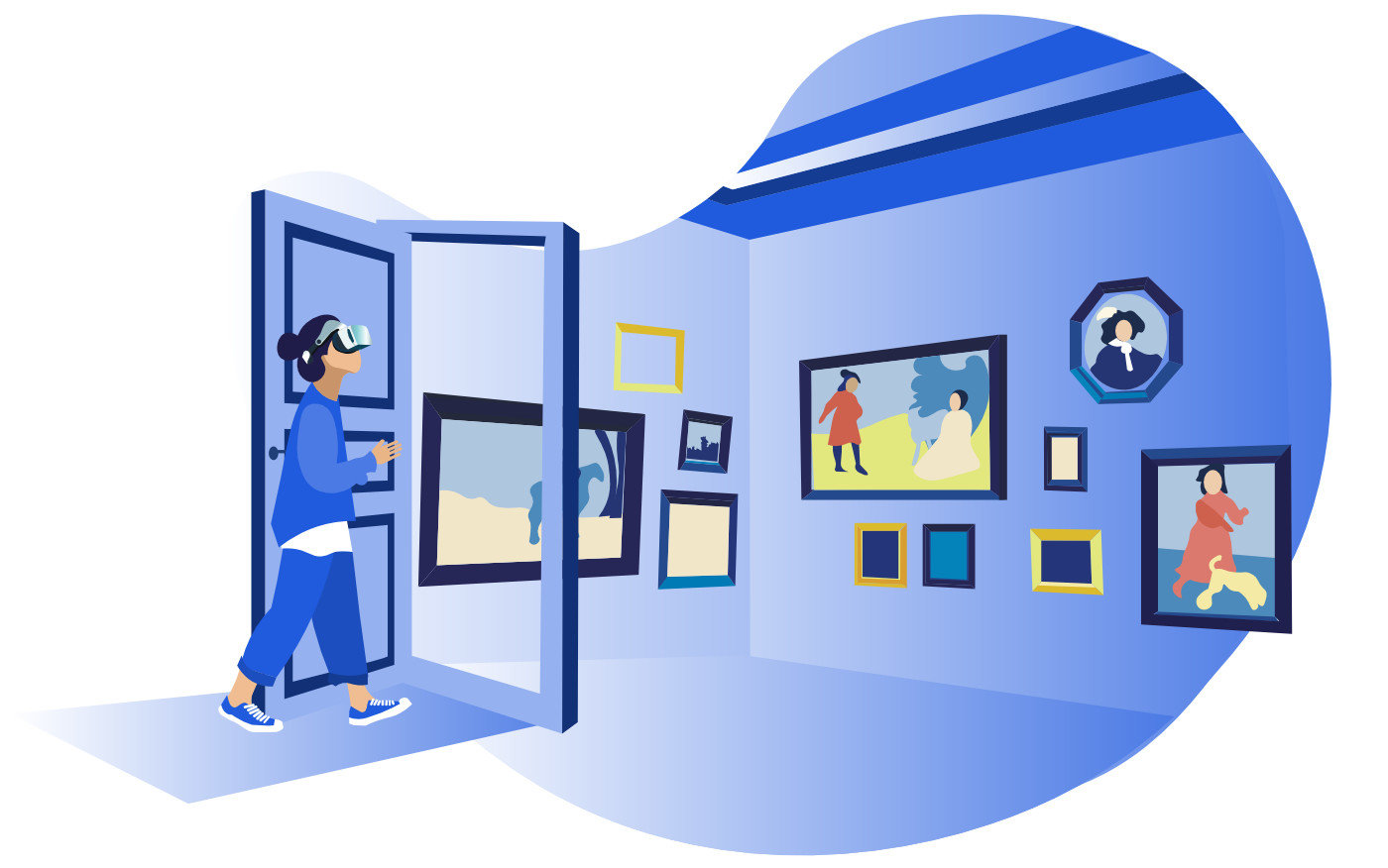
Investing in virtual reality training is already paying off. The cost is already affordable and the VR goggles have long-term benefits for the company.
A company can take advantage of all of these opportunities:
- Shooting procedures and training new people.
- Entire training sessions, creating training plans, simulating the environment and required situations often trained by soft skills
- Discovering opportunities to meet in the VR space with all the tools available with huge cost savings, both financial and time.
How it works
The most important sense for humans is sight. About 80% of all information is perceived by sight. In VR, you are surrounded by a 360-degree environment that you are drawn into with a VR headset. After a few minutes in VR, your brain will be completely convinced of the veracity of the environment.
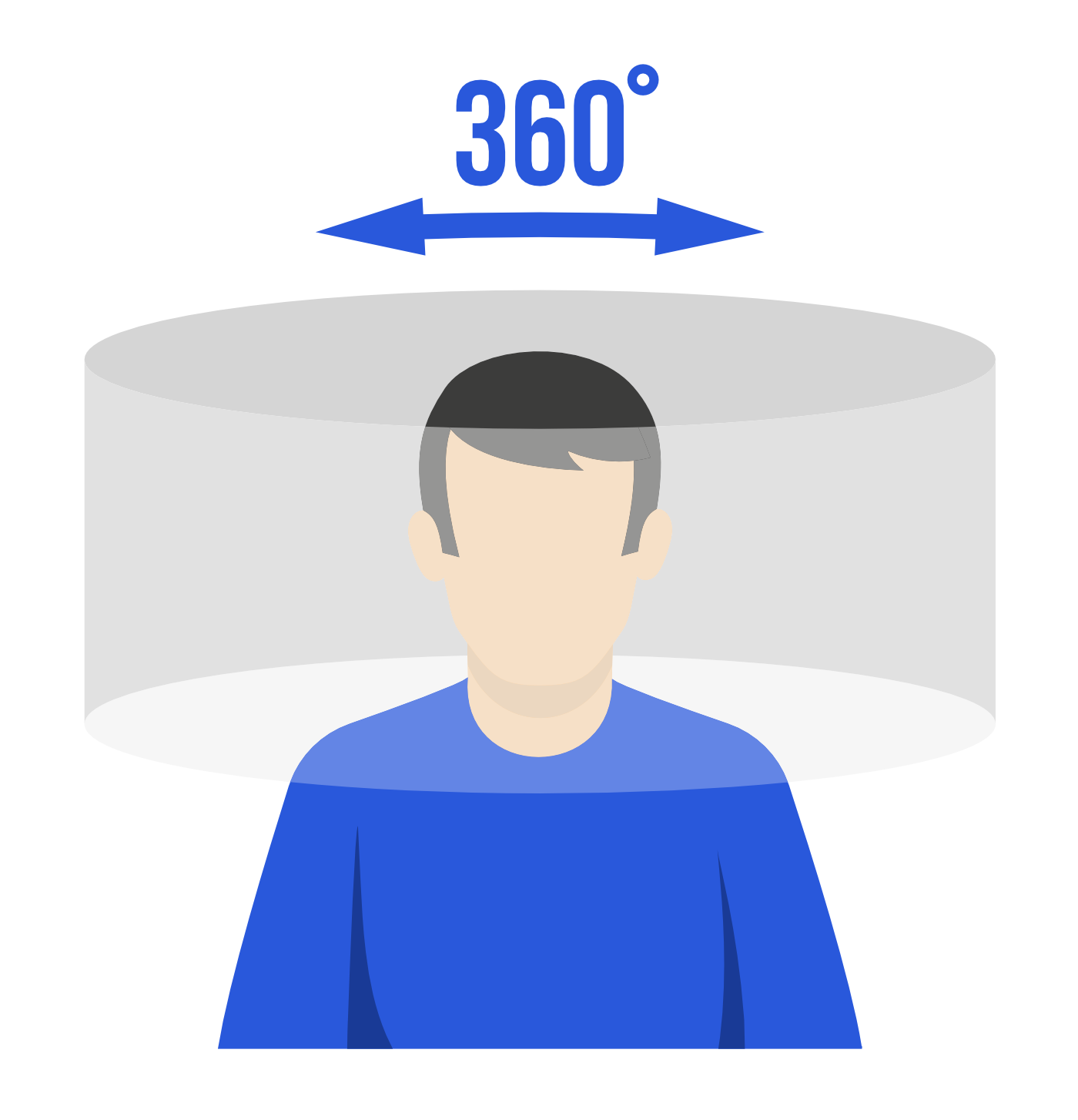
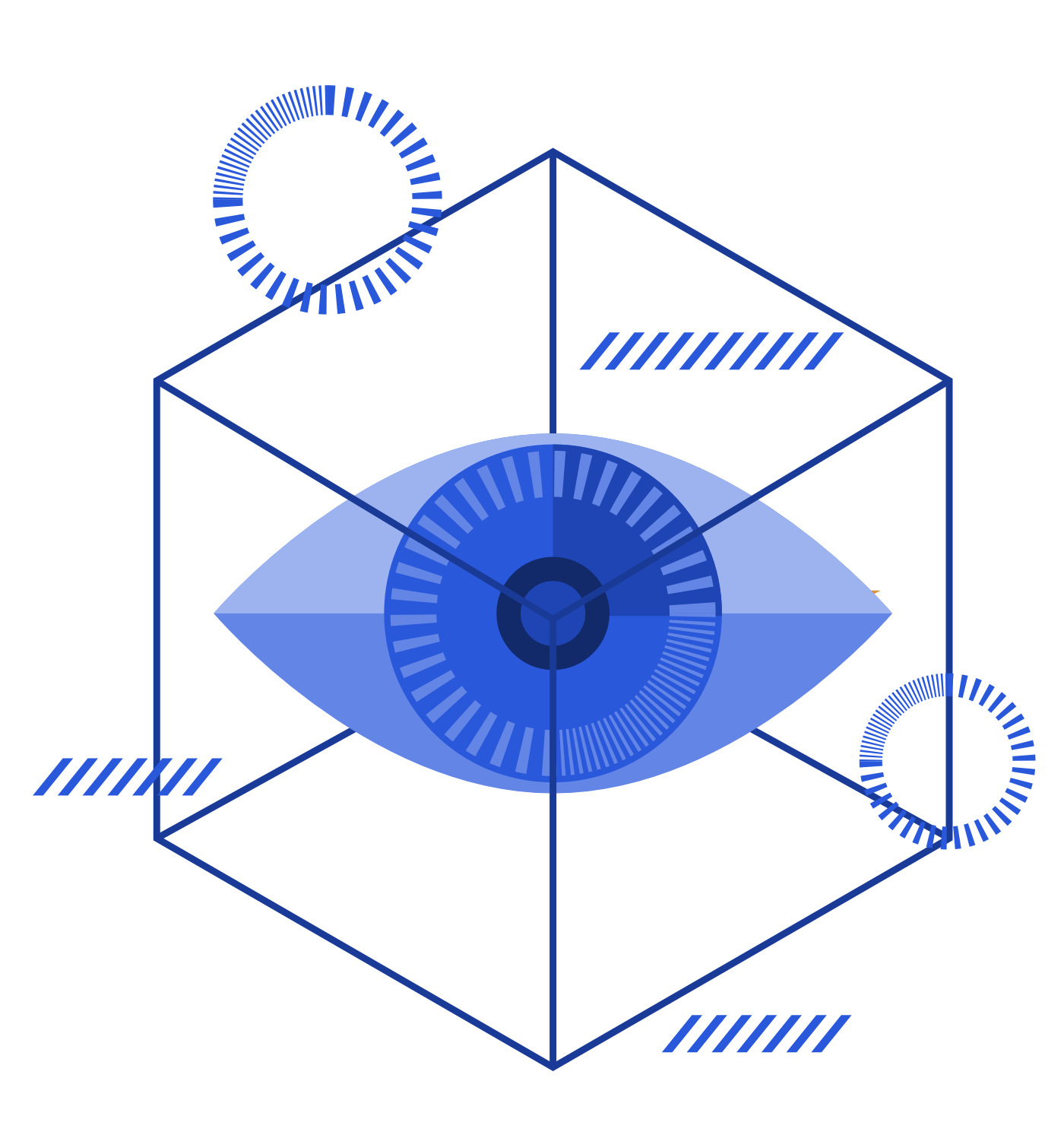
A 360-degree image can give us the authenticity of the environment. We are able to add 3D objects, a projection screen, photos, videos, and last but not least special effects to the image itself.
This allows us to simulate different situations and environments in the most realistic way. Such realistic and accessible simulations have never been available in the history of mankind.
Each training session is filmed with a spherical 360° camera in 8k resolution. This gives the participant a completely credible sense of their surroundings. You can look all around you and experience the atmosphere of the video in full resolution.
We design VR training in two ways – standard training and customized training.
Chapter 3
Training opportunities
Standard training
Standard training programs on topics such as effective communication, leadership and motivation, stress management, and time management, among others. These VR courses are designed in a coaching format, so the participant, who puts on the goggles, sits in a chair, and together we tackle the assigned topic.
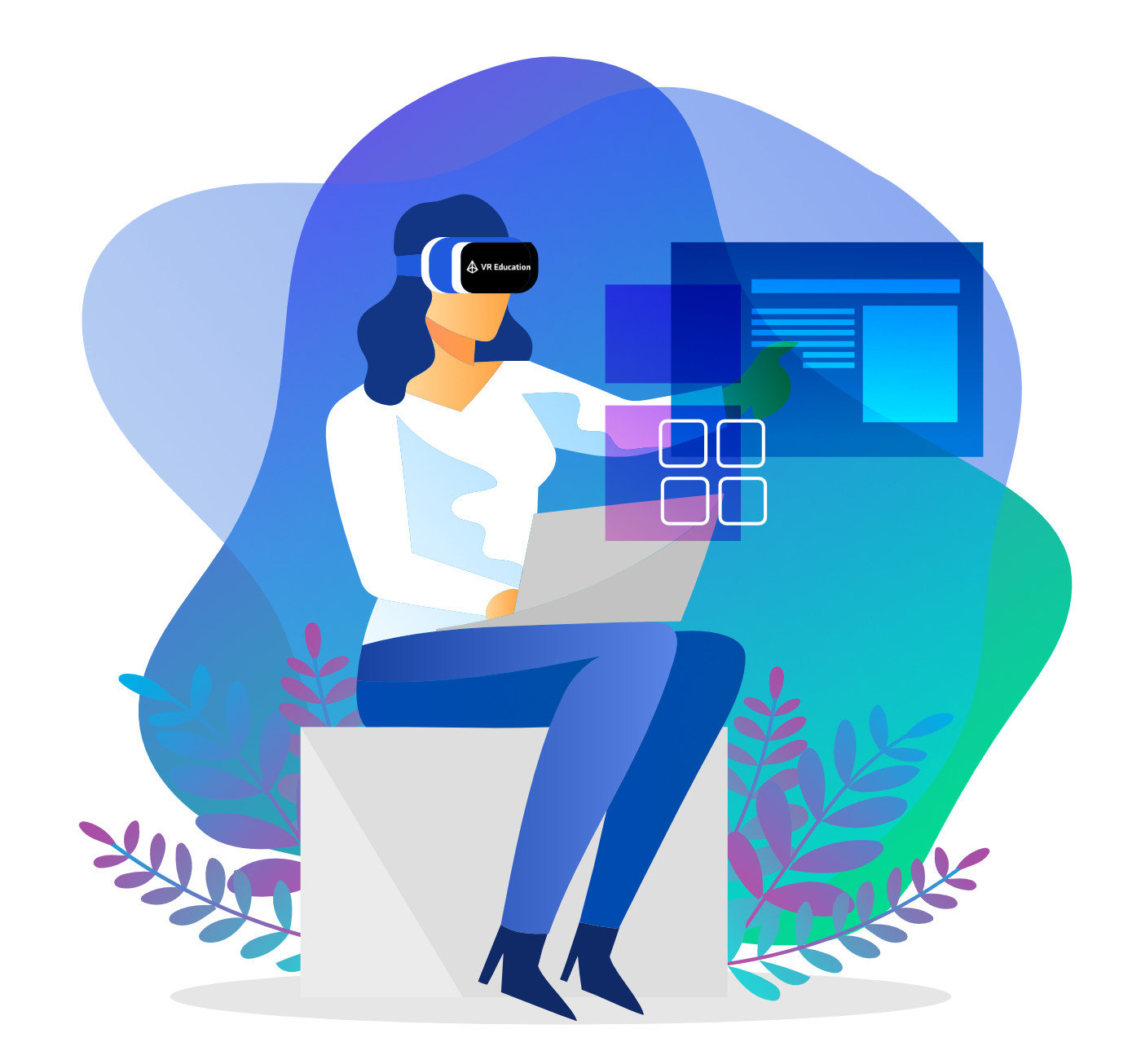
Usually after 20 minutes, the block ends and is followed by tasks to be completed by the participant. The participant puts on the glasses again and continues. We have 4-6 blocks on one topic.
After watching all the blocks, there is a possibility to continue with the lecturer by practical „live“ training, when we do not have to deal with theory and knowledge anymore, so we can focus more on training the necessary skills.
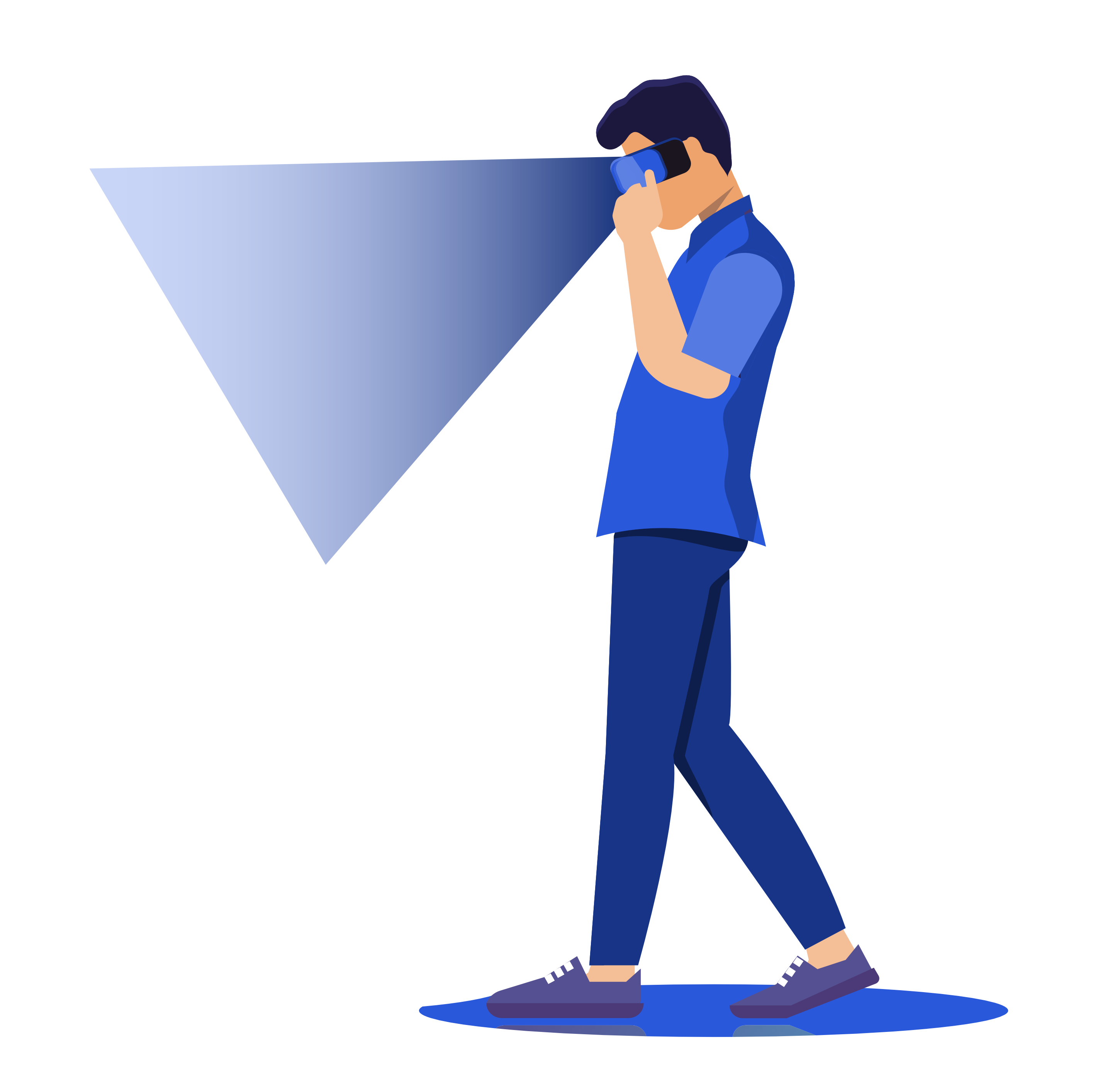
Or connect to a room, the so-called VR meeting hub, where we can meet in a virtual reality environment and discuss all your questions from the training, share various materials or 3D objects, presentations, training videos, etc…
This environment again allows us to meet with up to 15 participants with VR headsets or 30 participants logged in from a desktop PC, mobile, or tablet.
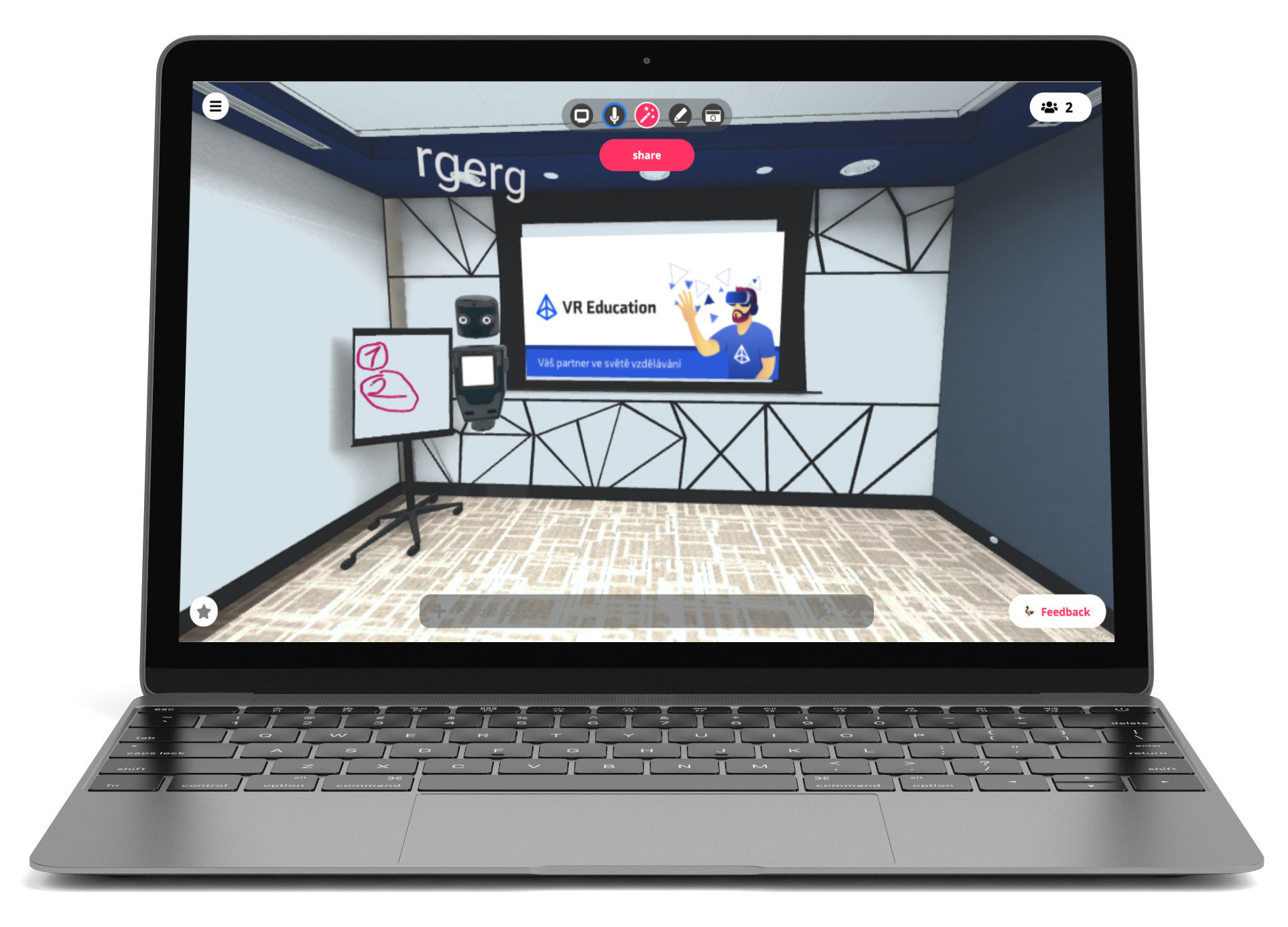
In the case of „our“ recorded training videos, we are able to provide playback on multiple VR headsets simultaneously with just one click on an iPad or laptop that the trainer/coach would have with them.
This option would achieve widespread viewing of the content on 15 or more VR headsets simultaneously. This option would be offered if VR education was part of the training day. Otherwise, when the trainee is reviewing the topic before the actual training day, this feature would not be used.
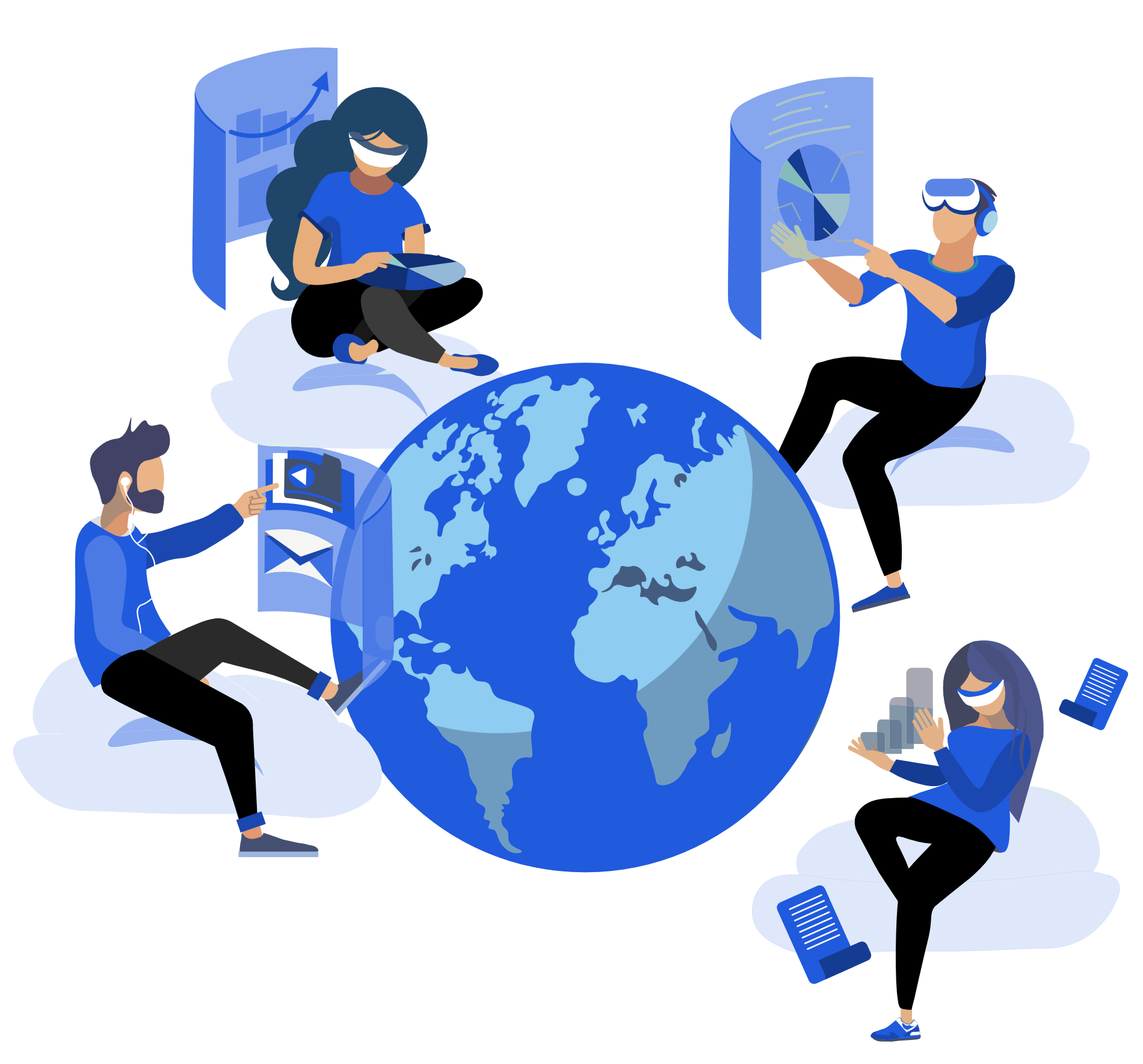
As long as the client has their VR goggles and has downloaded our app, we are ready to respond flexibly to further orders and commissioning of new tutorial videos and ensure the continuation of the training as the app would also serve as a platform for uploading new videos remotely.
Here again, we are able to set the number of licenses – views for the paid form of training. So, for example, you may evaluate that you want to order a different topic for three people based on the training than for the whole group and we will upload the training content even without your physical presence to your glasses.
Customized training
Customized training is used more by larger clients who have their own corporate policies and corporate principles in training. With our cooperation, we shoot VR training videos directly tailored to the client’s requirements, in your environment at the machines, training, important processes, etc..
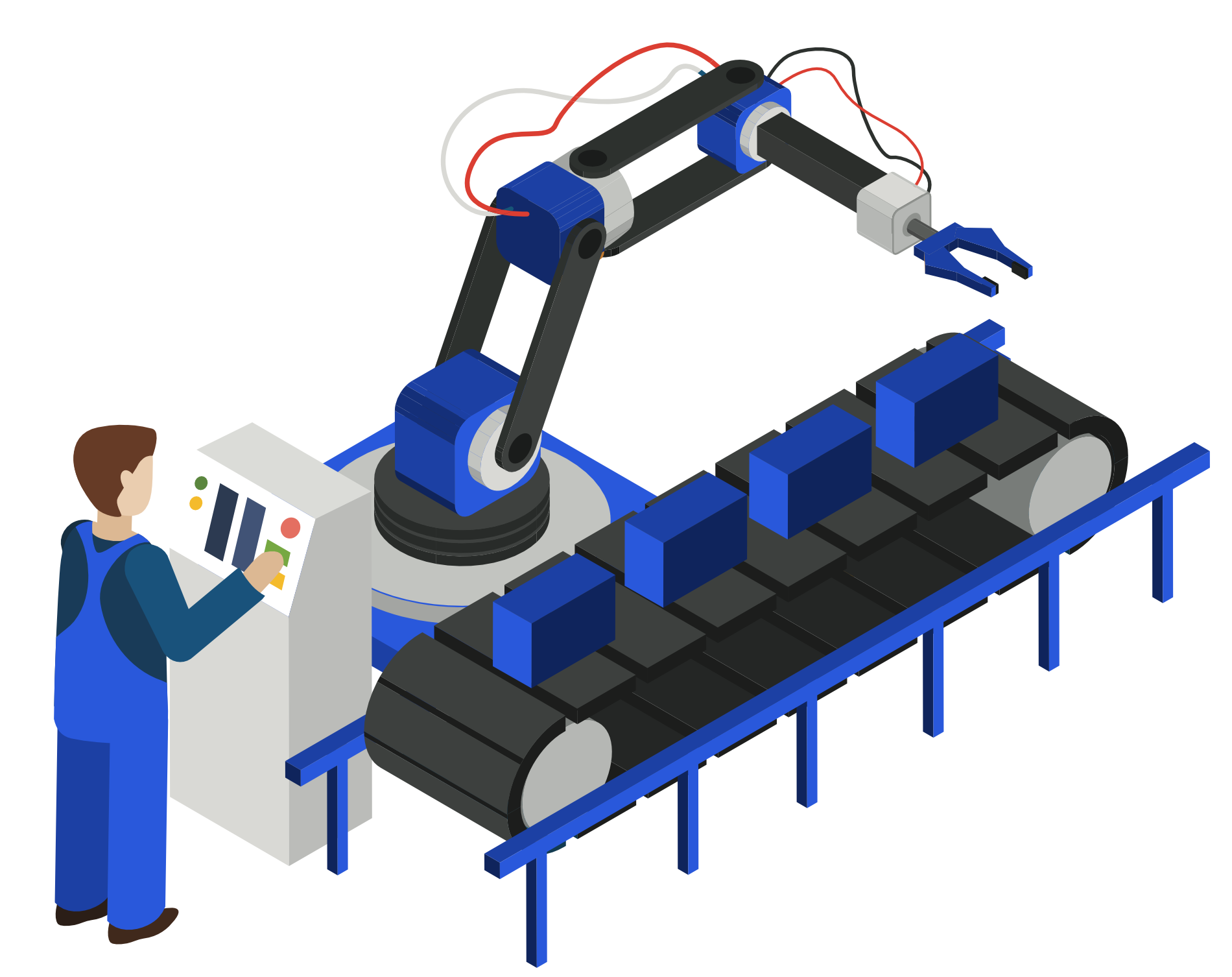
We record the training into the participants‘ glasses and they can recall, watch, repeat it at any time during the training.
We have a wide range of different environments available, from classic meeting rooms to the mars or the forest. We are also able to create a bespoke meeting room for companies according to their requirements. Subsequently, the same continuation model as in the previous case is developed.
Chapter 4
5 reasons to use VR
Interactivity
VR is interactive and therefore immerses participants in the topic. We achieve a realistic experience of situations. It offers a myriad of possibilities and it is up to the sponsor how to best match the new training to the company culture and current needs of the company.
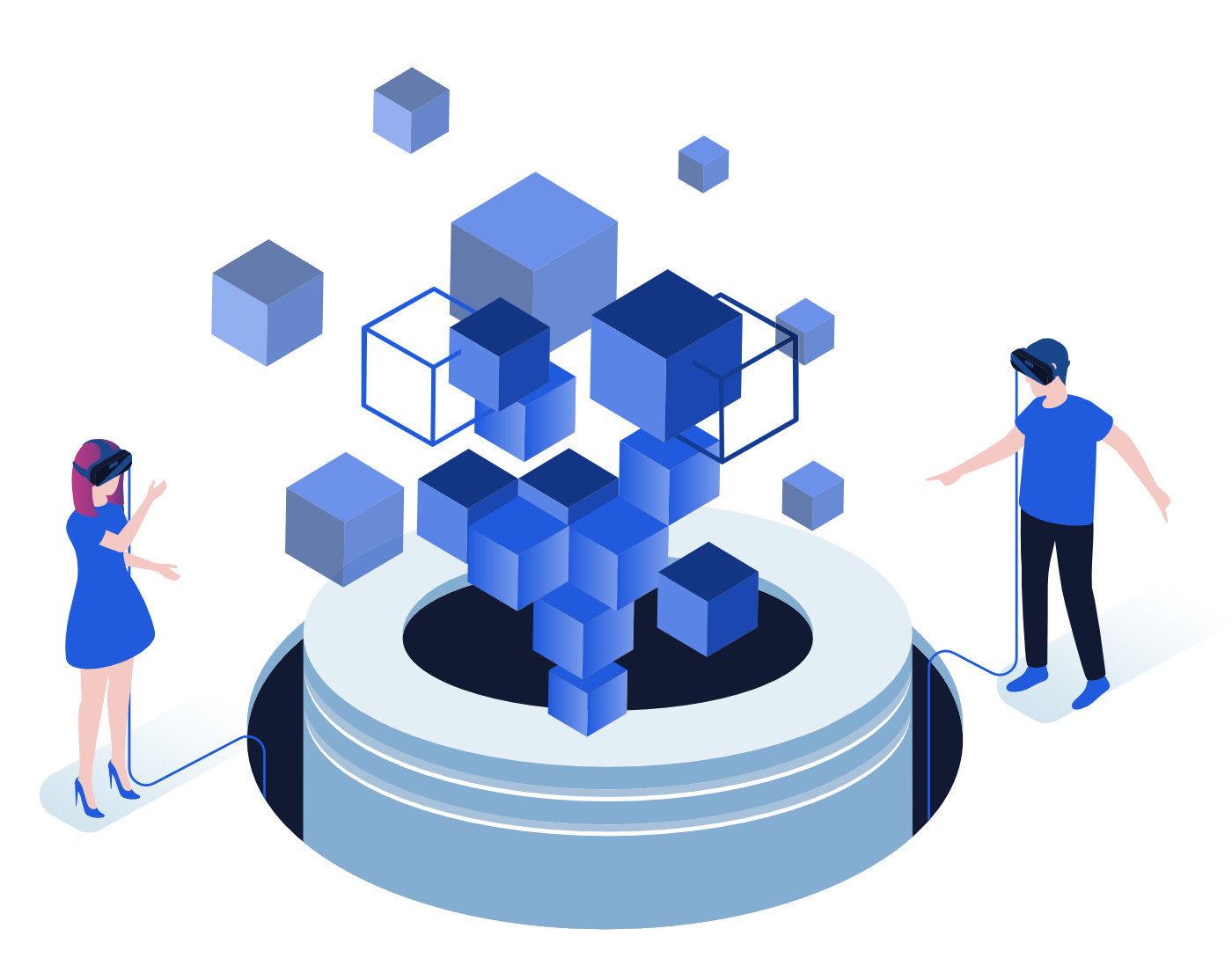
Concentration
According to research, we achieve 100% concentration on a topic very quickly after putting on the glasses. Full concentration is a very positive aspect of VR for me. I concentrate on only one thing going on around me and have no chance of any side interactions with reality or straying off-topic.
You don’t notice that your cell phone flashed during class, that a new secretary walked by, that …. The goggles are snug and I don’t perceive the outside world through the headset, which gives me total focus.
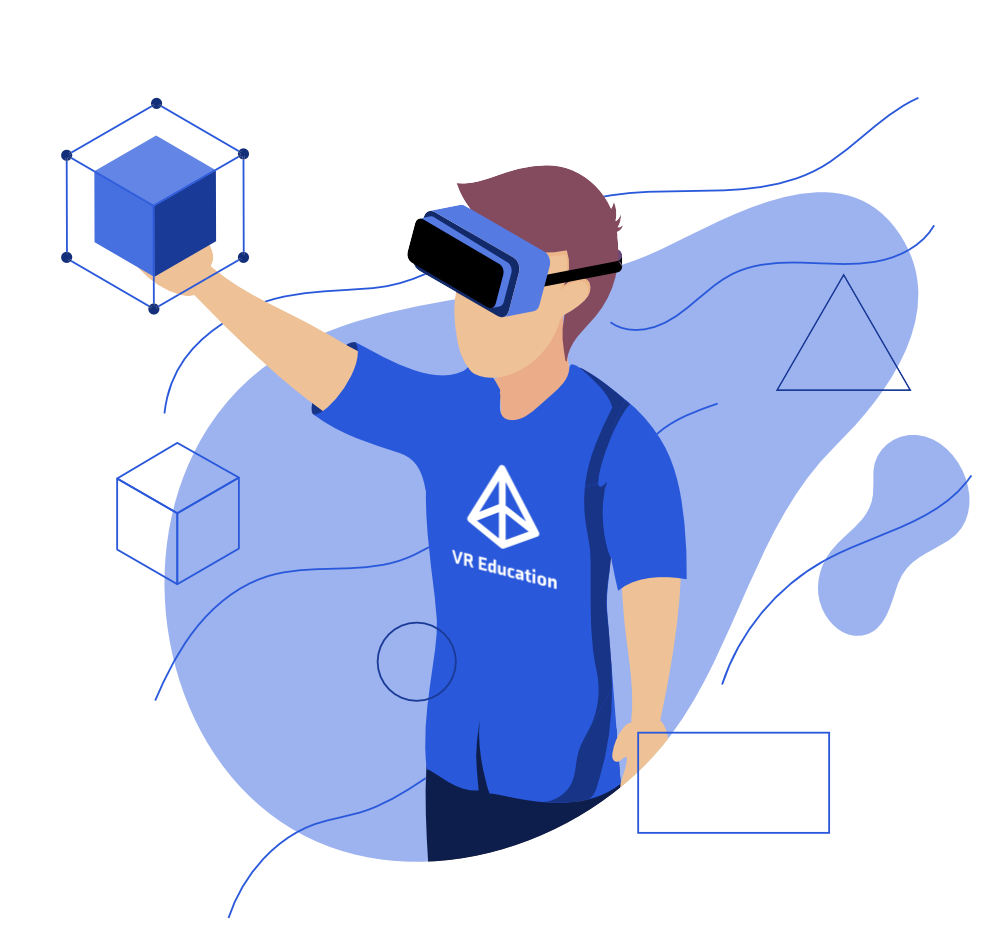
Economic Advantage
From government agencies to the smallest family-owned businesses, from the largest multinational corporations to the non-profit sector, all decision-makers are concerned about the same thing: cost.
They are clear that they cannot achieve productivity without investment. But can they even count on getting a return on that investment?

When you take into account all the costs associated with the training, such as the cost of the training day for the training agency, the cost of transporting employees to the training, providing a substitute for the trainees at the workplace, food and accommodation in the case of multi-day training, and many other items.
You’ll find that being able to train your people with a combination of VR education plus a tutor consultation will work out far cheaper and more efficiently.
You will see additional savings in the area of training new staff. As a new generation of workers comes on board, the turnover rate goes up. It’s not always related to management error or poor working conditions. A strong motivator for this generation is the word CHANGE and this results in this turnover.
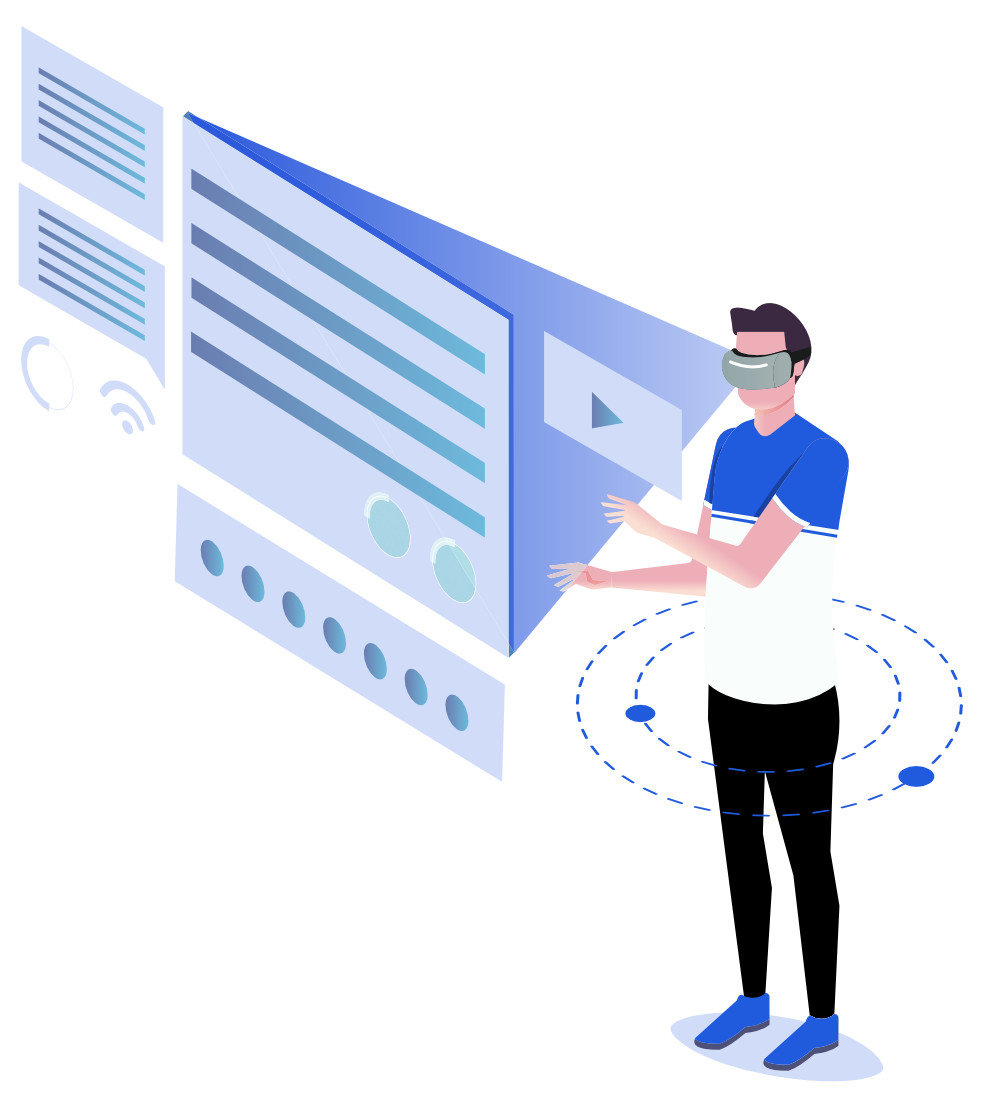
Older workers in companies often already perceive this phenomenon negatively and do not want to keep training new ones who will soon leave. Create training processes here in VR to allow new people to see the process they need to do their job, with your commentary explaining what, how and why, maybe 10 times. You’ll find out the effectiveness of this tool very quickly.
A new dimension of experience - a competitive advantage
Yes, in the current labor market, with the current shortage of skilled people, this tool can be a strong competitive advantage for you.
Young people like to be educated in areas that make sense to them. They like to be given the opportunity to learn something new and in a different way than sitting and listening to a lecture all day. Show them that you are moving with the times and that you are not afraid of new challenges and new technologies.

Technological progress
Virtual reality is a technology that can open new avenues in education not only by transmitting images in a 360° world, but above all it gives us a new dimension of interaction.
We can train important processes in production, we can learn new skills. We can work with the simulation of stress and how to overcome it, for example by training public speaking, where we record an audience in the glasses in front of which you can practice your performance. Other topics such as conflict resolution, workplace safety, stress management. The possibilities are countless.
Technological advances have reached a point where it is possible to start using virtual reality in line with a strong trend of the day, the oft-repeated term – digital transformation.
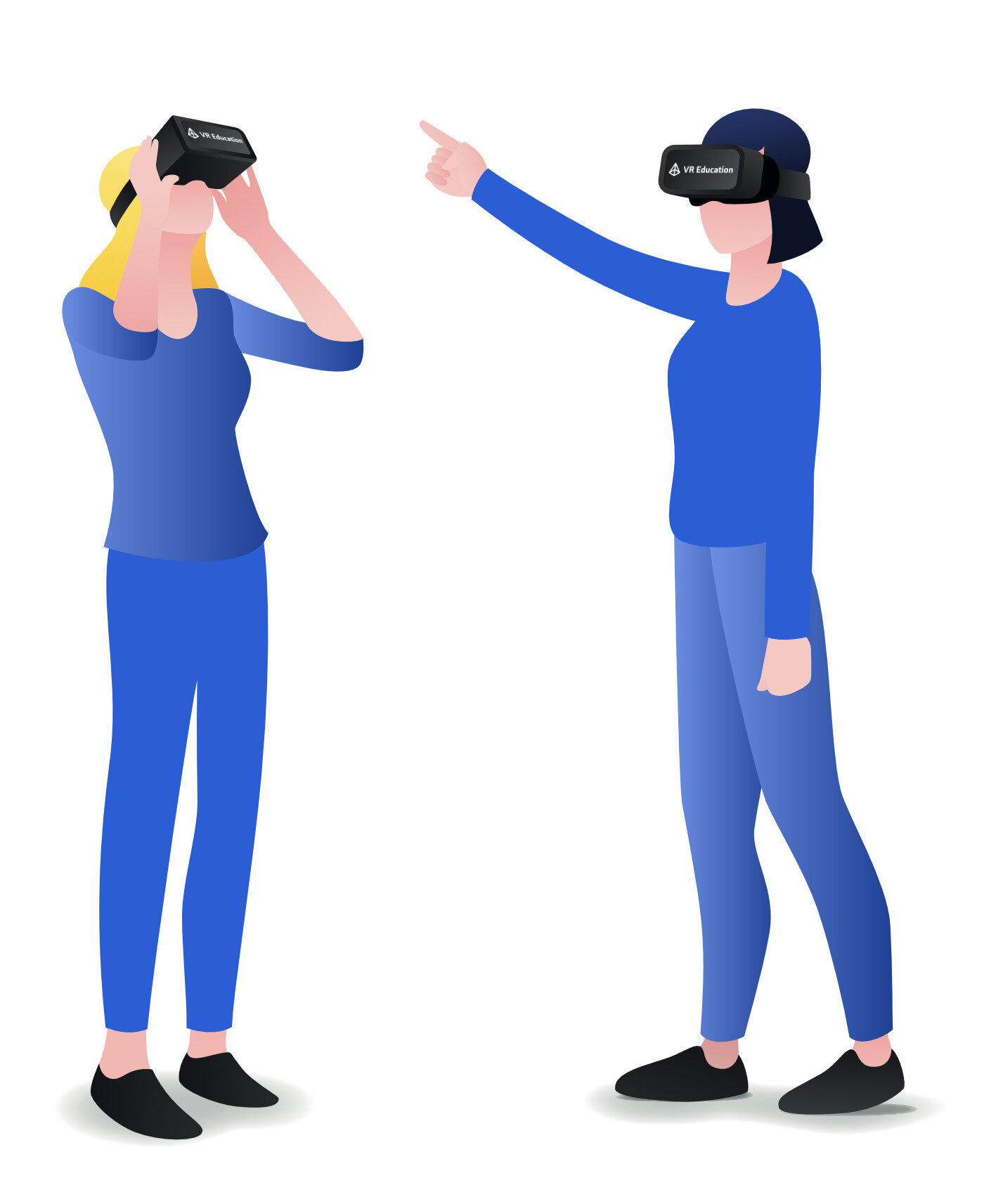
- Digital technology is changing customer expectations and needs – here is a great opportunity to grow and create a big edge. But what limits us most are our own ideas and little information on how to use this to our advantage.
- Individualization and customization – working from home, most young people, according to surveys, want a home office. You can conduct your meetings, meetings, and meetings via VR and connect with people from different places in the world.
- Minimization of workforce – processes, robotization, outsourcing.
- Ensure growth and move closer to the center of gravity of decision making, for those who want to. New technologies, new approaches, and attitude changes can help you attract new active people who want to create, want to work, are proactive, and find meaning in what they do.
Conclusion
VR is changing the game of education
At the end of my article, I will arc back to the beginning. The important thing is to decide what we want to believe. What is your imagination and what can you imagine.
I know there is not much logic in these words that you might like to expect, but I will help myself with the words of Albert Einstein.
”"Logic gets you from point A to point B. Imagination will get you anywhere."
Albert EinsteinPhysicist, scientist
I am convinced that even as an adult we are constantly changing and evolving – the area of personal maturity – that determines how a person perceives and presents the meaning of what they perceive – what is going on around them.
So my wish for you is that you take some time to move your business, your position, your life in your imagination „There…“ .



